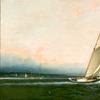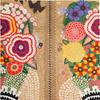Featured 19th Century Painter: Walter Launt Palmer (American 1854 – 1932)
- March 10, 2021 11:34
Walter Launt Palmer, known as the “painter of the American winter”, was born in Albany, New York, the son of neo-classical sculptor Erastus Dow Palmer. His childhood was steeped in the art world. The Palmer home, being located in Albany, which is located on the bank of the Hudson River, was not unsurprisingly host to a number of the Hudson River School of artists, including the noted Frederick E. Church, John Kensett and Jervis McEntee. At the age of 12 he received his first art lessons from New York portrait painter Charles Loring Elliot, later followed by formal art education under the aforementioned Frederick Church. Palmer was only 18 years when one of his paintings was accepted for exhibition at the National Academy of Design. Throughout the 1870s and early 1880s, he made several tours of Europe, studying in Paris under Carolus Duran and spending time in Italy, especially Venice. During the 1870s, when he was in the United States, he spent time in Albany, with other Hudson River artists--William and James Hart, Homer Dodge Martin, and Edward Gay. Artist Walter Launt Palmer initially concentrated on painting beautifully detailed renditions of building interiors, and his switch to landscapes after experiencing eye problems, was a natural progression. His masterfully created tonalist winter scenes are a melding of both the academic-style of the Hudson River artists and that of his artist friends the noted American impressionists Robert Blum, William Merritt Chase, Frank Duveneck, John Singer Sargent, and John Henry Twachtman. Palmer himself credited Pre-Raphaelite artists, such as John Ruskin with having inspired the shadowing he used in his snow paintings. He reportedly said that “snow, being colorless, lends itself to every effect of complement and reflection". In 1908 Palmer and his wife were invited to dinner at the White House by then President of the United States, Theodore Roosevelt. Walter Launt Palmer exhibited widely and won numerous awards--the National Academy of Design, 1887 (Hallgarten prize); Charleston, West Virginia Exposition, 1892 (Silver); World’s Columbian Exposition, Chicago, 1893 (first prize); Philadelphia Art Club, 1894 (Gold); Boston Art Club, 1895 (Gold); American Watercolor Society, 1895 (W.T. Evans Prize); Pan-American Exposition, Buffalo, 1901 (Silver); Charleston Exposition, 1902 (second prize); Louisiana Purchase Exposition, 1904 (Silver, Bronze); Philadelphia Art Club, 1907 (Silver); Buenos Aires Exposition, Brazil, 1910 (bronze); Art Institute of Chicago, 1919 (Butler Prize); and the Wilmington Art Society, 1926 and 1928 (Dupont).











_-Closing-the-Distance_100x100_c.jpg)









